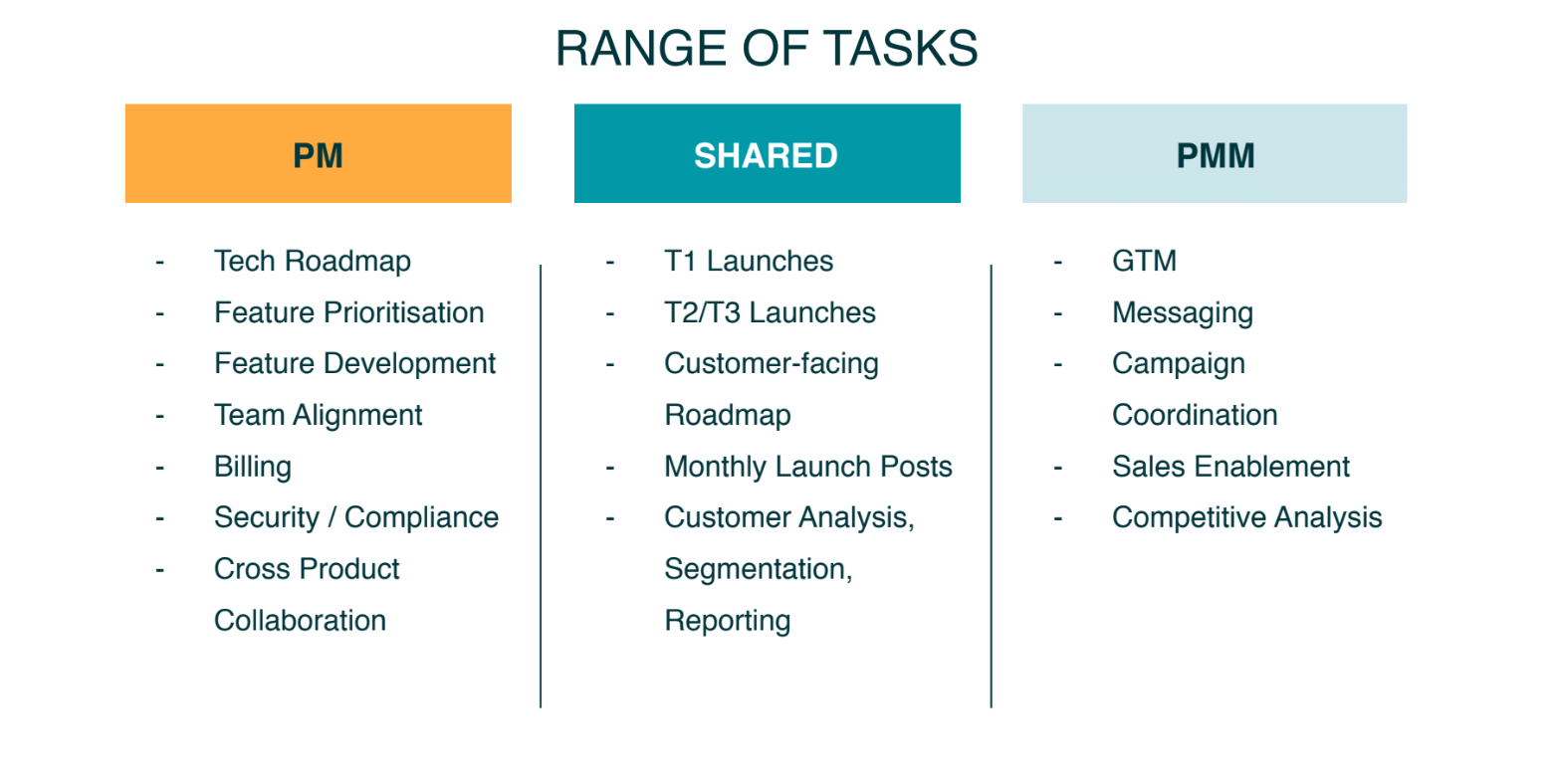Product managers and marketers often have distinct roles and responsibilities within a company, stemming from their focus on different aspects of the product lifecycle. Despite their differences in roles, collaboration between them is essential for maximizing a product's success.
By working together, product managers can provide valuable insights into market needs and product features, while product marketers can effectively communicate the product's value proposition to customers and drive sales. This collaboration fosters a holistic approach to product development and marketing, leading to better outcomes and enhanced customer satisfaction.
But when the two clash or aren't on the same page, challenges can arise. We cover how to identify these issues and how best to work through them.
Product management vs. product marketing
Product marketing and product management are distinct but interrelated roles within a company's product lifecycle. Here's a breakdown of their differences:
- Product management: Product managers are responsible for overseeing the entire lifecycle of a product, from conception to delivery. They work closely with cross-functional teams, including engineering and design, to define product features, prioritize development efforts, and ensure the product meets market needs. Product management involves strategic decision-making and often requires a technical understanding of the product.
- Product marketing: On the other hand, product marketing focuses on the promotion and positioning of a product in the market. Product marketers craft messaging, develop go-to-market strategies and create marketing collateral to drive product adoption. They collaborate closely with sales, marketing, and product teams to communicate the value proposition of the product to customers.
While product management guides the development of the product, product marketing ensures its successful launch and adoption in the market. But what creates friction between each role?
Unclear roles and responsibilities
This is a real sticking point. The amount of friction involved in determining these roles might depend on the personalities in the relationship. It might also depend on how much trust there is between the pair. It also depends on the organization. There is, realistically, a lot to be considering.
Lack of a shared goal
Another cause of stress between PMs and PMMs is a lack of alignment as to why PMs focus on solving a certain problem. When there isn't a shared KPI, you've got different motivators pulling the PM and the PMM in different ways. The PMM may be measured on how successful a campaign is, whereas a PM could be measured on shipping.
How can we address this?
When we think about the difference between the role of a PM and the role of a PMM, it boils down to a very crude statement.
The PM doesn't do marketing.
That is the most black-and-white way of looking at it. But there are very clear tactical areas for both teams to be working on. A good way to think about it is that the PM is responsible primarily for driving the internal team and the internal product development. Whereas, our PMM is responsible for communicating externally and with our customers.
Let's look at the customer side and think about the PMM. Some of the tactical work that they complete revolves around campaigns, sales enablement, positioning, and marketing. And then, if we look at PM roles, their tactical work centers on product, feature prioritization, trade-offs offs, and team alignment.
Sharing is caring
But, the real benefit of these roles working hand in glove is where there is overlap in the work that they do. Those areas may include: your roadmap, your go-to- market planning, and also looking at how you're going to talk about your products to your customers.
But for now, take a look at the table below.

When PMs and PPMs mix
Just because you're in a specific role doesn't mean you can’t have an interest in another area. You could be a product marketer who has an interest in components of the product management side or vice versa. If you've got flexibility, there are potential opportunities for you to dip into that. When you have that trust and that relationship, and you understand the roles and responsibilities, you're able to dip in and help as needed across the organization.
Each has very clear roles and responsibilities, but there's also a gray area. People aren't boxed in. Product marketers are deliberately part of the product leadership team. They're part of all the conversations. They advise and give ideas. PMMs will answer questions from the support teams and on behalf of customers almost more frequently than the product team because they are so involved and so engaged.
You can then actively encourage the different perspectives that product marketing partners bring to the table. They look at things differently than product management, which adds so much value to our product and for customers.
Key takeaways
How much time have you actually invested in building a meaningful, deliberate relationship with your product marketer or your product manager? How well understood are the roles and responsibilities? And can you create that gray area so people can grow and pivot a little bit?
If you can allow people to grow and mature, this will bring your product forward. And all of that, ultimately, is boiled down because we all build products. We all love to build, promote, and talk about products because we love our customers and want them to have a great experience.




 Follow us on LinkedIn
Follow us on LinkedIn



